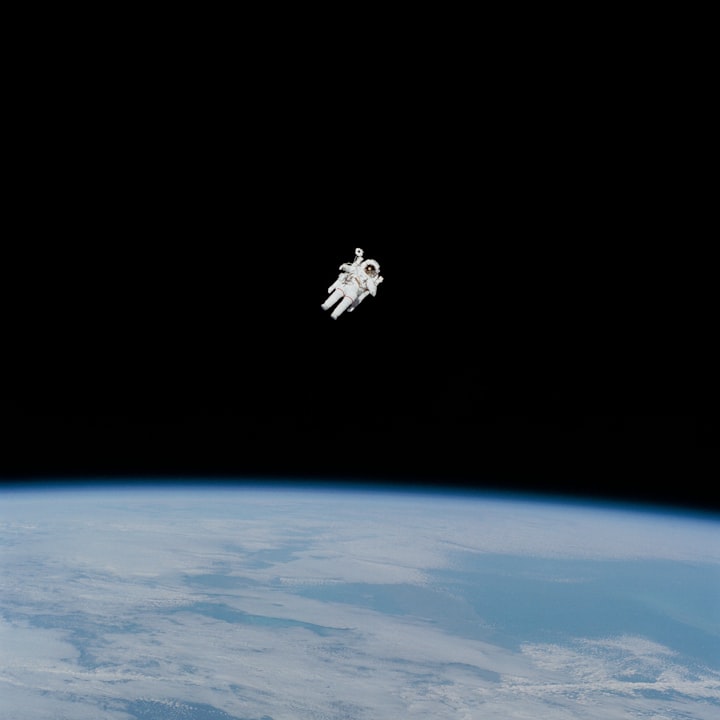The most classic "miracle of strength" in the history of science
Challenging absolute zero with "earth cooling

You will be surprised to find that you are so sensitive to changes of a few degrees when arguing with people about whether the air conditioner is set at 26 degrees or 27 degrees, whether the drink you bought from the kiosk is cold enough after exercise, and whether your palms are "fried" when enjoying the view of Lizuna Port in a hand game.
However, if you look beyond the physical sensation of temperature and do not talk about adding clothes and pants, how much do you know about temperature?
As the saying goes: learning a language starts with foul language, and increasing knowledge starts with "the most". According to the definition of physics, the temperature is a response to the intensity of molecular thermal motion, high temperature means that the average kinetic energy of molecular thermal motion is large.
Through theory, we can introduce the temperature limit in the universe. For high temperatures, the upper limit of temperature is when the microscopic particle with the largest mass is moving at the speed of light, and the value exceeds 10^32 K, which is called Planck temperature.
Frosted liquid helium valve
The limit of low temperature, which should be more familiar to everyone, is the so-called "absolute zero", with a value of 0 K, which translates into the common temperature unit of -273.15 degrees Celsius, a limit that exists only in theory and is impossible to reach.
If you ask how "absolute zero" came about, I'm afraid not many people can answer, and the story about it is quite amazing because when the concept of absolute zero was introduced, no one could even come close to such a number.
It took more than a hundred years before someone made liquid helium, which reached a low temperature of -269°C (4.2 K), and the way to achieve it was complicated and simple, but not with a refrigerator.
The concept of absolute zero did not come about overnight, and it took several generations of observation to conclude. The earliest was in 1702, the French physicist Guillaume Amonton raised the topic of whether there is a limit to cold.
He improved a thermometer using air and mercury, the volume of air changes with the temperature, driving a cut of mercury to move to show the scale, the minimum value of the thermometer has a limit, that is, zero point, according to today's projection of about -240 ° C.
Guillaume's air-mercury thermometer
Until the end of the 18th century, there were also a number of physicists who tried to explore this limit of low temperature. 1785, it was Jacques Charles, another physicist from France, who discovered the relationship between the temperature and the volume of a gas at constant pressure.
He found in his experiments that in the case of constant volume, for every 1°C decrease in temperature, the pressure of the gas decreases roughly 1/273 of its pressure at 0°C. According to this rule, when the temperature of the gas decreases to -273°C, the pressure becomes zero, and the vacuum is gone and does not exist.
This is an impossible limit, and then the British physicist William Thomson (also known as Baron Kelvin, Kelvin was originally the name of a river) gave the first official concept of absolute zero, based on the summaries and speculations of previous generations, and explained it as the state in which the internal energy of an object is reduced to zero and the molecular motion stops completely.
These scientists, as well as Sir Kelvin, set one of the ultimate goals for future generations in the field of thermodynamics, and what followed was an unprecedented battle to challenge absolute zero.
The challenge of absolute zero evolved into an unprecedented race to liquefy a gas, and each gas conquered meant a hill to climb, with the ultimate goal being the impossible limit in the clouds.
It was a time of great exploration, and the race to reach the North and South Poles took place at the same time, but I won't go into that here.
Michael Faraday
The first key figure was the familiar Michael Faraday, who by 1845 had obtained a variety of gases in liquid form through primary compression and ice baths, and with his technology at the time, was able to obtain low temperatures as low as -130°C.
However, several gases could not be liquefied in his attempts anyway, including oxygen, nitrogen, and hydrogen, which were considered by Faraday to be "permanent gases" that could not be compressed into liquid form due to the theories of the time.
The reality is certainly not what Faraday his old man thought, these gases are just a little stubborn, but Faraday is also considered to challenge the progress of absolute zero to the foot of the mountain, and in front of a few mountains, it is oxygen, nitrogen, hydrogen, etc.
By the end of the 1870s, the Frenchman Louis-Paul Cayeté was the first to make liquid oxygen and liquid nitrogen, both of which can obtain a low temperature of -183 ° C and -196 ° C, respectively, which used an important principle - Joule-Thomson effect.
Phenomenologically, the Joule-Thomson effect is quite common, for example, when we play with a lighter, if we do not light it and simply release the liquefied gas inside for a while, we can feel the cold sensation at the exit of the liquefied gas, which is one of the phenomena described by the effect.
A more specific and rigorous description is that the expansion of a gas in an environment of equal enthalpy will cause the temperature to rise or fall. In addition, there exists a so-called inversion temperature, which usually shows a temperature decrease when the ambient temperature is lower than the inversion temperature, and a temperature increase in the opposite direction.
There are two kinds of changes when the gas expands with equal enthalpy: the average distance of molecules increases, the potential energy rises so that the kinetic energy decreases and the temperature drops; the average distance of molecules increases also leads to a decrease in the average number of collisions per unit time, the potential energy converted by collisions decreases and the kinetic energy rises so that the temperature rises.

To sum up, when the ambient temperature is lower than the inversion temperature, the former leads to a more significant temperature drop, while when the ambient temperature is higher than the inversion temperature, the latter leads to a more significant temperature rise. Most of the gases have inversion temperatures above room temperature, i.e., the temperature of the expansion process decreases.
However, the exceptions were hydrogen and helium, which had not been separated at that time, whose inversion temperatures were much lower than room temperature, even though they were produced to the point where they would instead warm up when expanded at room temperature.
James Dewar
The next major figure was the Scotsman James Dewar, who was challenged with the last of the "odd" "permanent gases" of the time, hydrogen.
Scientists back then expected to reach at least -250°C to produce liquid hydrogen, a temperature that was an impossible challenge with the technology and equipment available at the time, and it was here that Dewar had to invent new equipment, which is precisely where his contribution lies.
Dewar's solution was not complicated in principle, and could be described as a "miracle of strength". He envisioned a solution in which gas could be compressed and liquefied at room temperature, liquefied, and then expanded to obtain a low temperature, cooled the next gas, which was more difficult to be liquefied, and then cooled the next gas... ...
This multi-stage cascade program may not be Dewar's original, but it is what he achieved, and the key lies in the manufacture of the instrumentation.
The instrumentation required a lot of money, so Duval would demonstrate the unique properties of some liquefied gases to guests at the Royal Society's laboratory, using experiments to draw attention to them.
James Dewar demonstrates his apparatus at the Royal Society
In 1886, a terrible explosion occurred in London when Dewar accidentally mixed liquid oxygen and liquid ethylene in an experiment that caused an explosion and nearly killed his scientific career.
However, Duval soon produced a mere 20 cubic centimeters of liquid hydrogen by means of a chloromethane-ethylene - oxygen - hydrogen multistage cascade, when the storage tank was subjected to 180 atmospheres of pressure and reached a temperature of -205°C.
James Dewar's multi-stage cascade "violence" refrigeration
Dewar then passed the liquid hydrogen into the expansion tube and watched the thermometer steadily drop, eventually achieving a new record of -252°C, completing what his admired predecessor Faraday called an impossible challenge.
However, shortly after the success of the experiment, a new gas emerged that did not allow Dewar to have the last laugh. The inert gas helium was discovered and produced, and it was simply a case of the dark side.
Kammerling Onnes (medium bald)
Next, the Dutchman Onnes took over the burden, using Dewar's device and the liquid hydrogen plant he built with his banknote capacity, and also made liquid helium miraculously with great effort, reaching 4.2K.
At this temperature close to absolute zero, many substances would exhibit unprecedented states, including hydrodynamics, electromagnetism, and other related properties, and this led to Oneness winning the Nobel Prize.
Kammerling Onnes and his money-capable devices
Some of the refrigeration appliances we use today, including air conditioners and refrigerator, the principle can not be separated from the contribution of this group of scientists who study gases. The craftsman who made the apparatus for Oneness set up a company to produce thermos bottles, called "Thermos".
But it is a pity that Dewar died in 1923, the same year that the electric refrigerator for home use was invented, and three years later, Ones also died, they fought for refrigeration all their lives but ultimately did not use the refrigerator.
I hope that you have a desire to know the youth, you can open the refrigerator to enjoy a cold drink when you remember this legendary history.
About the Creator
Taufik Olu
Money is round. It rolls away.






Comments
There are no comments for this story
Be the first to respond and start the conversation.